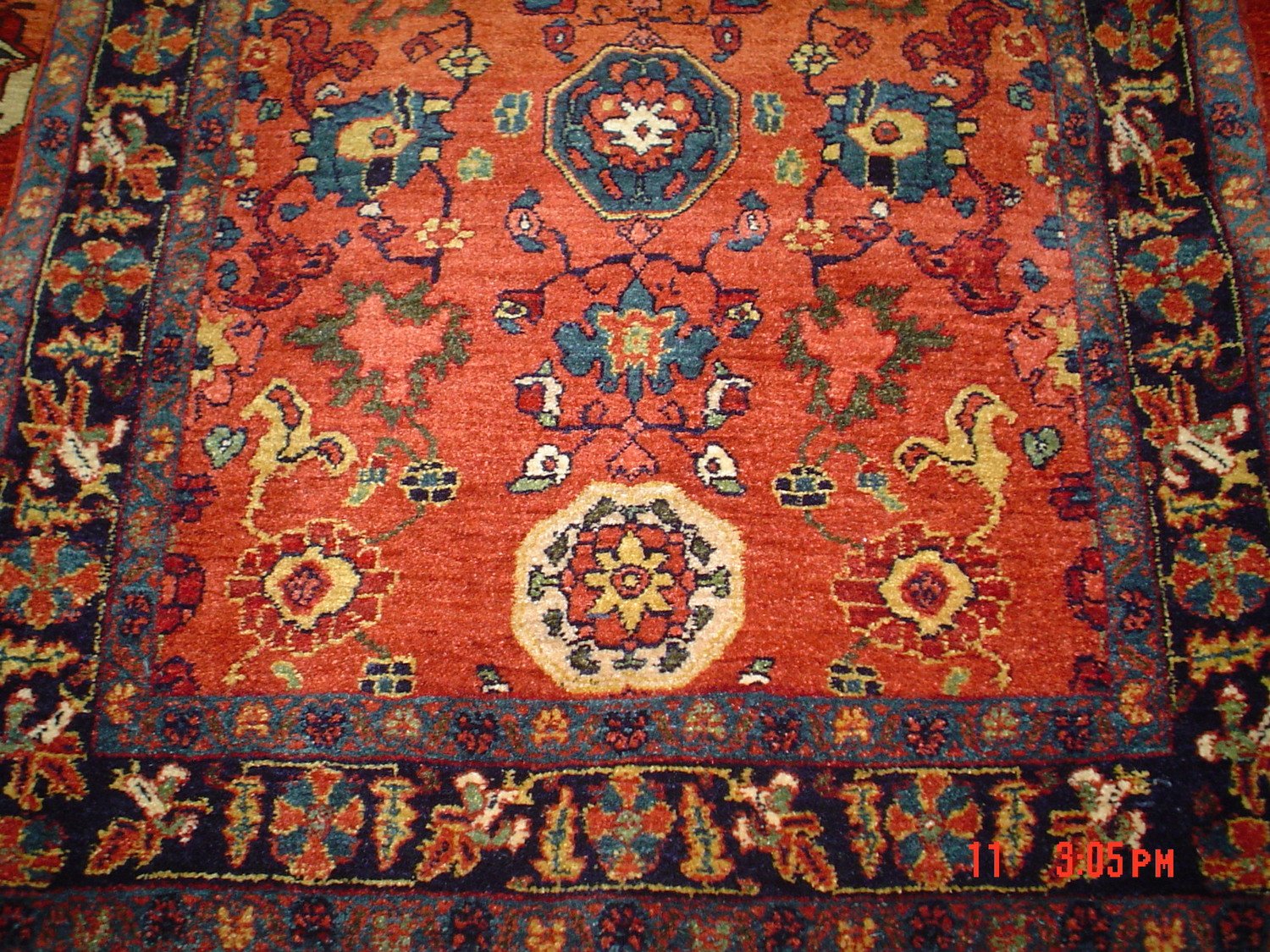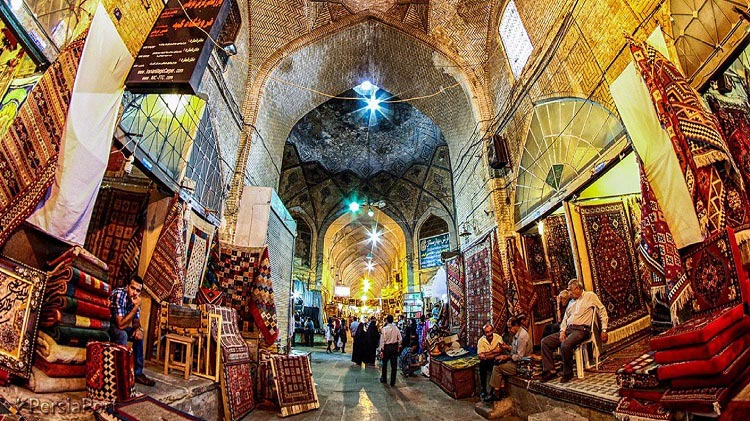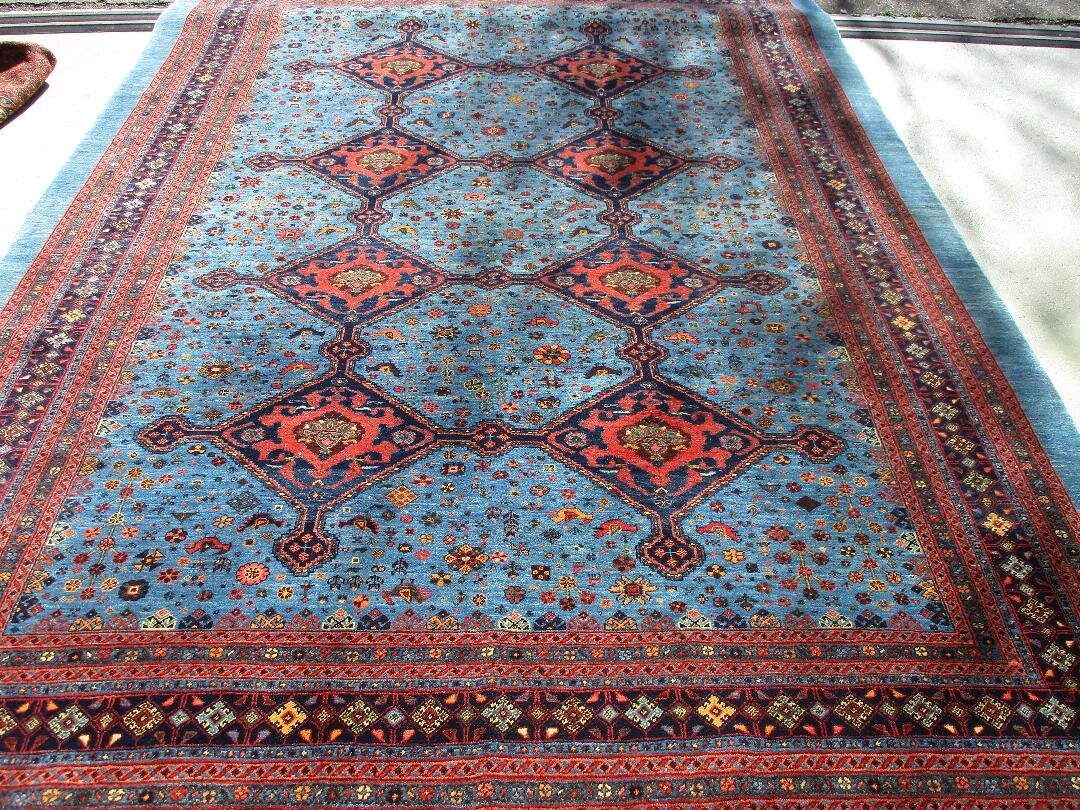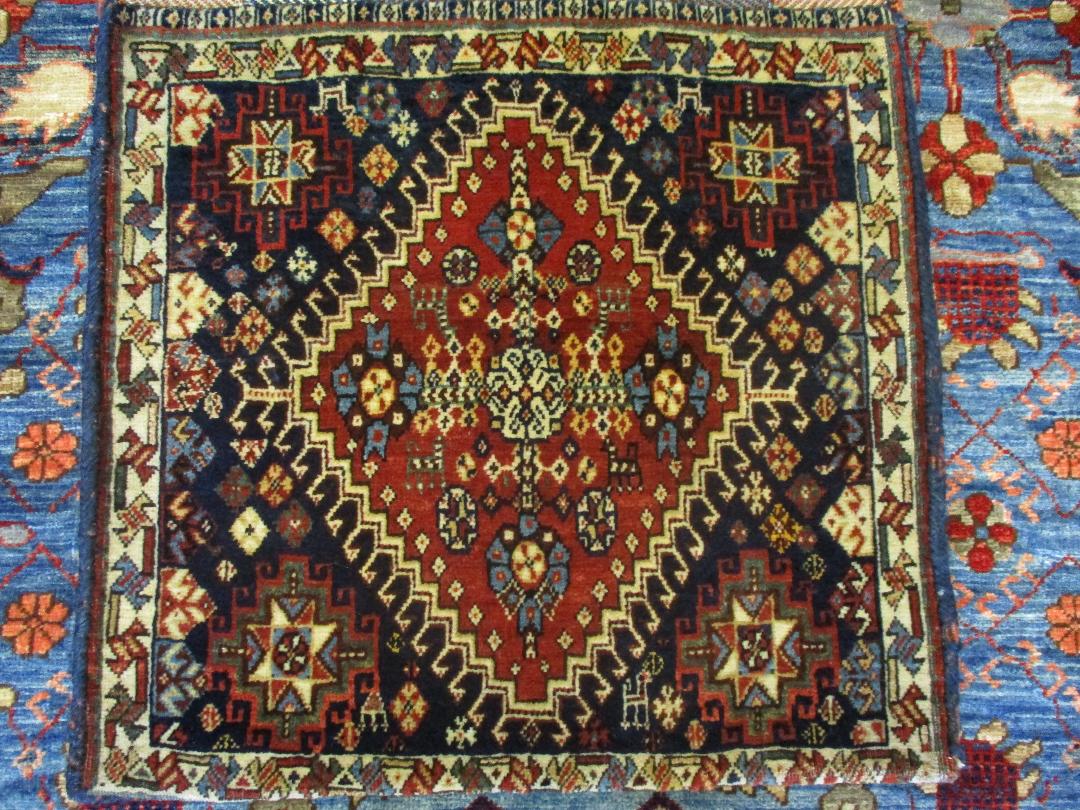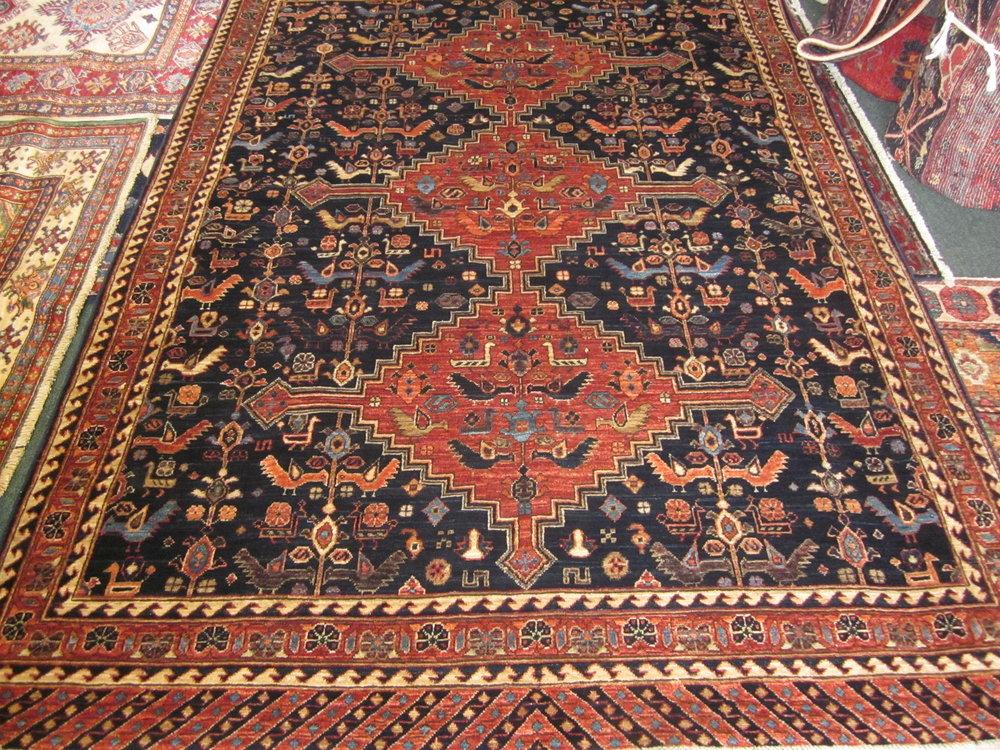What is a Qashqai Rug and Who Are the Qashqai People?
The Qashqai Confederacy is a nomadic tribal affiliation that is composed of various tribal subgroups that have been united since the 16th Century in Iran. Speaking a Turkic language, with a large number being of Turkman descent, they are located in the Fars Province in southwest Iran. They are pastoral nomads, migrating with their flocks of sheep and goats between summer and winter pastures in areas near the Zagros Mountains. They are skilled and prolific weavers and have a tradition of weaving dating back centuries. According to some estimates, there are close to 400,000 Qashqai living in Iran today. Alternate spellings for Qashqai are Kashgai, Ghashghai, and Gaschgai.
Vakil Bazaar, Shiraz, Iran
Having endured many hardships and oppressive governmental attempts at controlling and suppressing their nomadic lifestyle, they are known as a strong and proud people. There are many Qashqai today that are still living the nomadic, pastoral lifestyle, although many have settled in villages. The Qashqai women wear bright floral colors with long flowing skirts and decorative scarves. In the many photographs I have seen of Qashqai weavers, the women are usually smiling and look to be cheerful.
Historically, the marketplace for their rugs and textiles has been Shiraz, Iran which is located between their summer and winter pastures. Shiraz is the capital of Fars province and was formerly the capital of Iran during the Zand dynasty. Famous for its beautiful gardens, mosques, accomplished poets, and enchanting bazaar, it is still a thriving city today. Shiraz is sometimes referred to as the city of gardens and is an important destination if one is traveling to Iran.
It was noted by Walter A. Hawley, the author of Oriental Rugs, Antique, and Modern, first published in 1913, that the beautiful translucent quality of the wool they used and the colors achieved in their weaving spoke of Gothic stained glass windows with mesmerizing beauty! (page 116) This was in reference to the rugs from Shiraz.
In the recent revival of Oriental rug production, once again using vegetable-dyed, hand-spun wool, the Qashqai weavers have woven many superlative Gabbeh rugs in addition to their traditionally designed rugs. Here is a very pretty Gabbeh that is currently available. This piece is in a landscape design and woven with superior quality, lustrous wool. For more information on Gabbeh rugs, see my article. What is a Gabbeh?
Their antique rugs are prized by collectors for the silky quality of the wool, the fineness of the weave and the jewel-toned colors found therein. This is an antique Qashqai rug that is also currently available at my gallery. Not lacking for detail, this piece is filled to the brim with color and iconic designs.
How to Identify a Qashqai Rug?
The colors most often used are reds, beautiful blues of varying shades, navy, and in smaller increments of color, ivory, sometimes yellow and light green. They are woven with the Persian knot on a wool foundation, with one to two rows of wefts. The wefts are usually red, although I have seen a few pieces with brown wefts of undyed wool. The knot count can be anywhere from 70 up to over 170 kpsi (knots per square inch). All antique Qashqai rugs were woven with hand-spun, vegetable-dyed wool, as are the most recent production of the best quality Qashqai rugs currently available on the market. Lower quality pieces may not be vegetable-dyed, with harsher colors. Additionally, some of the newer rugs may be woven with cotton warps. A rug of quality will always speak to you and the colors will ALWAYS be harmonious.
Recently woven 5 x 7 Persian Qashqai rug in a classic Qashqai design.
What Designs, Colors and Patterns Are Qashqai Rugs Known For?
One of the most recognizable designs of the Qashqai weavers repertoire is the diamond medallion. This is often seen with variously placed small figures representing people, flowers, animals, and birds in the field of the rug. The Qashqai women begin to learn weaving at an early age and these rugs are woven from memory. The selvages on the right and left sides (sometimes referred to as the side bindings) are usually two-toned in what is called a barber pole design. See the second photo below.
Here is a new video of an 18 ft. Qashqai runner that recently arrived at my gallery. It has a classic Qashqai design and the video depicts much detail.
This antique Qashqai saddlebag is from my personal collection.
Here you can see a close-up of the barber pole design on the selvages.
Note the small diamond in the center medallion and also in the borders of this Qasqai runner.
What is the Difference between a Persian Qashqai and a Qashqai Design Rug?
The designs from Qashqai rugs can be woven anywhere Oriental rugs are made. If woven in Iran by Qashqai weavers, the rug is a genuine Qashqai rug. If woven elsewhere, it would just be classified as a Qashqai design.
Here is a rug that was woven in Afghanistan, in a Qashqai design.
2019 Update:
In regard to the current Persian rug embargo that began on August 6th, 2018, do not lose heart. There are many amazing quality Persian rugs here in the US for the time being and hopefully, this embargo will not last forever.
Look for my video on Qashqai rugs if you would like to get a closer look.
Thanks for arriving here!
Penny Krieger
Penny Krieger is the owner of Paradise Oriental Rugs, Inc., located in Walla Walla, WA. Specializing in genuine Persian rugs and tribal rugs from Iran and Afghanistan, the rugs in her gallery are now available on an appointment basis. She also ships rugs out of state to all locations in the US. Questions welcome, all prices on request. Phone: 707-823-3355 Website: https://www.paradiseorientalrugs.com
